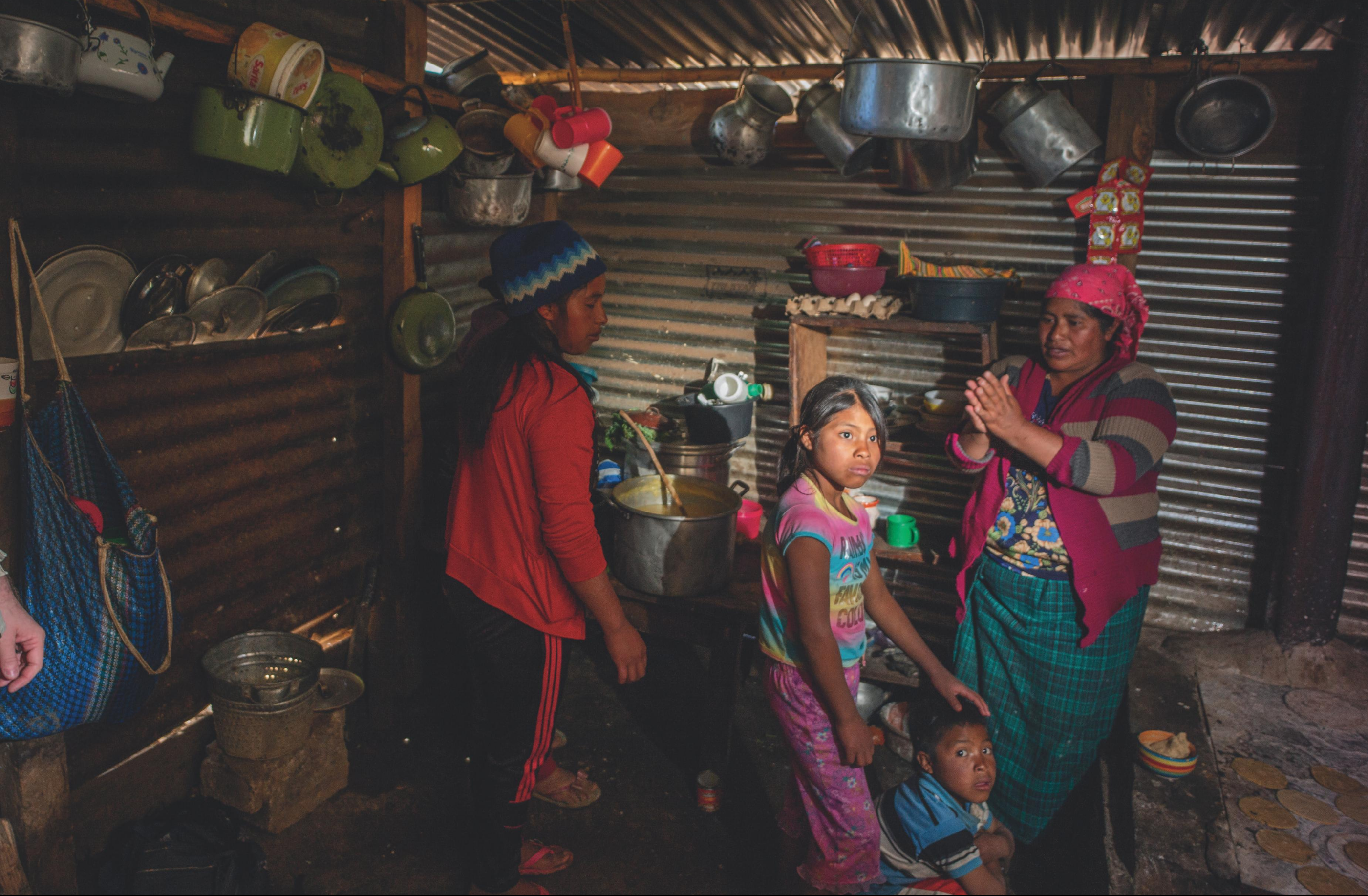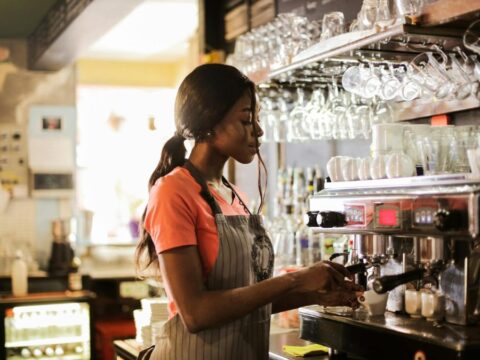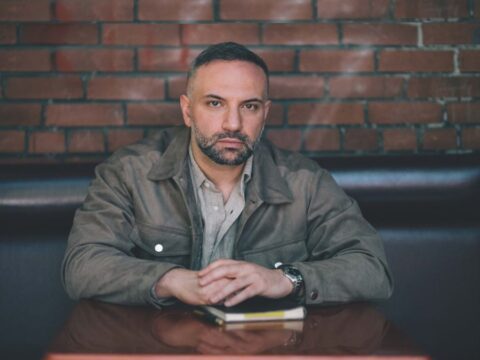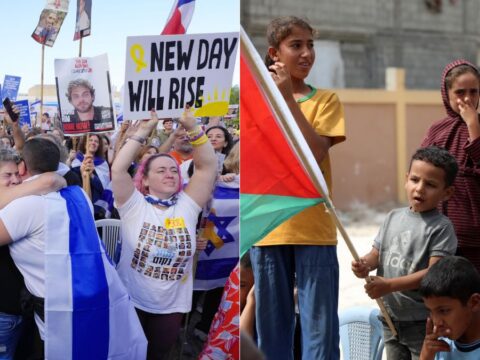Photography by Peter Bregg
Andrea Jose Juarez is small for her age, but she’s not short of audacity. She’s quick to tell you that she used to be eight years old but now she’s nine — imagine that, nine years old. She’s in Grade 2 at the village school up here in the mountaintops of Guatemala. She likes to draw. In fact, she’ll draw a saucy cat in your notebook if you like while her mom, who is tending the fire nearby, watches over her intrepid daughter. Andrea is wary, though, because the last time she interacted with strangers, she wound up in an American detention centre.
You may unsubscribe from any of our newsletters at any time.
Andrea is a returnee, the term used by the Guatemalan government for migrants who have been detained in the United States and deported. Two or three planeloads of them arrive most days in Guatemala City, the adults shackled to their seats, the kids on their own.
She became a statistic when she was caught in the net cast by U.S. President Donald Trump to get rid of the people he has referred to as rapists, criminals and drug dealers. While the act of separating children from adults and putting them in detention with other terrified children earned Trump global disdain, it doesn’t tell the whole story behind the migrants from the Northern Triangle — Guatemala, El Salvador and Honduras — who are making a run for the U.S. border.
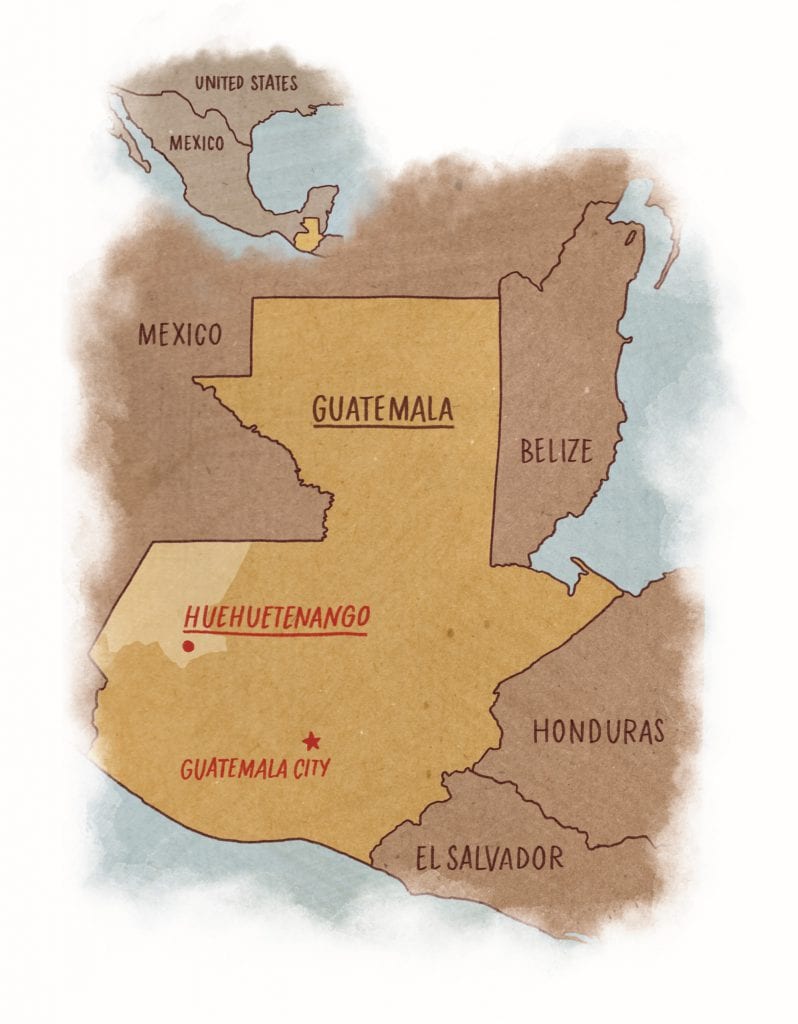
Andrea is one of 100,000 Guatemalans who were returned last year alone. Many come from the same mountainous region: Huehuetenango, a place in the western part of the country where ancient history and modern-day reality collide. Half a million residents are Indigenous, the famed Mayans who have been growing maize here on the rooftop of Latin America ever since the Bronze Age. Now, the dry season gets longer every year due to climate change. The crops are failing. In Guatemala, the number of people in need of urgent food assistance rose from 568,000 to 1.2 million between December 2019 and May 2020. There simply isn’t enough to eat, so Mayans are leaving a way of life that can no longer sustain them.
“Migration between Central America and the United States has been going on for decades,” says Danny Glenwright, the executive director of Action Against Hunger (AAH), an international organization that fights hunger and its root causes worldwide. “But where it was once mostly for economic reasons, it is increasingly happening because of lack of food and opportunity in places like Huehuetenango, forcing desperate people from here to take their chances elsewhere.”
Guatemala is about twice the size of Nova Scotia and has a population of 17 million. It’s known for its volcanoes, rainforests and ancient Mayan ruins — and a tourism industry that, until COVID-19, was on the rise. But now it’s making headlines for being the centre of a massive food shortage, for the brutal violence imposed by Colombian and Mexican drug cartels and for being a target of the man in the White House who positions this as a story about crooks and borders. It’s not. This is a story about human rights: the right to food, to migration, to asylum, to not be tortured. And it’s about how those rights are so easily traded and denied.
This is a tapestry woven by a diminishing food supply and all the medical ailments that come with hunger. It’s also the chronicle of the migrants’ dangerous and expensive escape, and of humanitarian violations driven by xenophobic politics.
Andrea lives with her eight siblings and parents on a patch of land in the highlands at 3,000 metres. Calla lilies grow wild in the fresh mountain air, angel trumpet trees scent the paths to the mudbrick huts, and baby chicks wander about. One could presume it’s a hidden paradise. But poverty is a reality for Andrea’s family and over 80 percent of Huehuetenango residents. More than half of the people living here are suffering from chronic malnutrition. Among children, stunted growth and cognitive impairment due to lack of food is becoming common; at least 77 kids under five died from hunger-related diseases last year.
The region is also a hot spot for drug trafficking. Cocaine and other narcotics flow in and out, mostly heading north to the American market. Opium poppies grow well in the highlands, and impoverished youth are easy targets for recruitment into gangs.
The government of Guatemala mostly ignores the Mayan people. And so the sons and daughters of the oldest civilization in Central America are fleeing to the United States to escape hunger and the climate of fear created by the drug traffickers. “No one is paying attention to Latin America right now because there’s no conflict like Syria’s here,” Glenwright says. “But this crisis of food insecurity needs the eyes of the world on Guatemala right now.”
The United Nations declared a state of emergency for the department of Huehuetenango in January. That resulted in a co-ordinated appeal launched by the UN Central Emergency Response Fund that was approved in April and began providing additional food assistance in Guatemala through a consortium of humanitarian organizations, including AAH.
Now, the coronavirus has become part of the equation. The returnees from the United States started bringing cases of COVID-19 to Guatemala in mid-March. All three countries in the Northern Triangle closed their borders immediately, but for the next two months, flights with returnees from the United States only slowed down. By then, COVID-19 had taken hold.
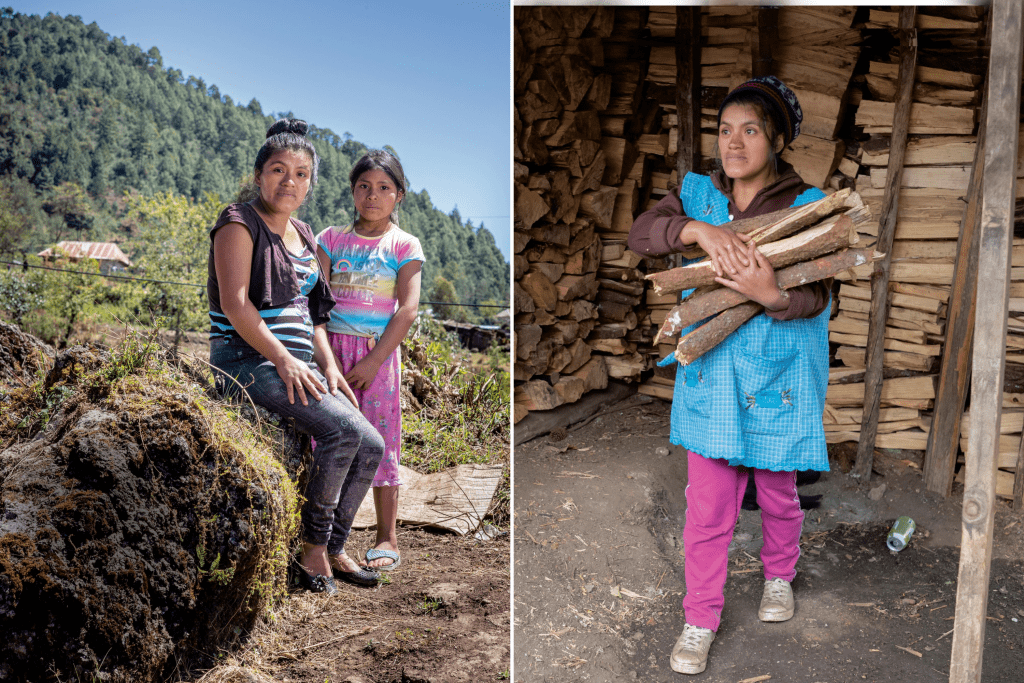
The chronic hunger and the terrifying drug gangs that swagger through these villages are why Andrea’s mother and father agreed to let their child go when their neighbour Angela Pedro Andreas, 25, presented them with a plan that seemed to promise food and safety in the United States. Pedro Andreas’s mother, who lives in America, told her that a mother and child had a better chance of presenting a convincing story to the immigration officers when asking for asylum. “I told the family I would adopt their daughter and make a better life for her in the United States,” Pedro Andreas explains. Her own mother sent the money — over 17,000 quetzals (C$3,000) each — to pay “coyotes” for the trip. Some coyotes say the fee will get you to the United States; others claim it will cover three tries to cross the border; still others say they’ll take the money once you’re safely inside the country. For Angela Pedro Andreas and Andrea, it was a one-off. Now or never. Pay up and take a chance. The poorest people, like Andrea’s parents, cannot pay coyotes for even one person’s trip, let alone a whole family’s. Their best prospect is to give up a child in hopes she has a better life — and that when she does, she’ll send money back to the family. Twelve percent, or US$9 billion, of Guatemala’s gross domestic product in 2017 came from remittance payments from relatives who live, often undocumented, in the United States.
Although Pedro Andreas tried to obtain adoption papers, she settled for a facsimile — a signature scribbled on a paper with Andrea’s full name and age on it — and hoped it would pass the test at the border. They left at 3 a.m. on a cold morning in April 2019, travelling the usual route of the migrants and facing many of the same perils, including hiding for six hours in the back of a container truck and staying in a house with 10 strangers until they could leave again at 2 a.m. Andrea says she saw the whole journey as a huge adventure and wasn’t scared at all. They made it as far as the desert and gingerly crossed the American border. Less than an hour later, immigration officers caught them and wanted to see their papers.
“They asked me if I am really the mother of this child,” says Pedro Andreas. “Then they said, ‘If you tell us the truth, nothing will happen to you. If you lie, you’ll be in jail for 10 years.’” So she told them the truth, hoping to be let go, but the officers began shouting at them. “I felt like a criminal, and that’s how they treated us,” says Pedro Andreas. “They pulled us apart. Andrea was clinging onto me and crying, but they yanked her away while that little girl was pleading, ‘Please, please Angela, take me with you.’”
Pedro Andreas was taken to a detention centre, where she stayed for three days before being driven to the Mexican border and ordered to get out of the car. She and the other detainees asked people to help them, give them a lift, show them the way. It took five days to get home.
But Andrea, who had imagined the United States as “a beautiful place with tall buildings and airplanes and cars,” was taken to another detention centre for children. “I was very afraid. I never slept by myself in my life before. And I didn’t know if I was going home or going someplace else,” she says.
It’s the child detention centres that have grabbed the attention of the public — kids crying for their parents, being held in fenced-off shelters that have been likened to concentration camps. The American “zero-tolerance policy” of separating migrant kids from their parents and guardians at the border began in April 2018, and although the federal courts found it to be illegal two months later, they allowed exceptions when the parents or guardians were suspected of a crime or deemed unfit. Due to this loophole, separations continue.
Physicians for Human Rights stated in a report released last February that “the U.S. government’s treatment of asylum seekers through its policy of family separation constitutes cruel, inhuman, and degrading treatment and, in all cases evaluated by PHR experts, constitutes torture.” In their investigation, most of the parents and children interviewed who had been directly affected “met diagnostic criteria for at least one mental health condition, such as post-traumatic stress disorder, major depressive disorder, or generalized anxiety disorder consistent with, and likely linked to, the trauma of family separation.”
Andrea spent eight months in detention and speaks of the experience nonchalantly: “I learned to eat the food — cornflakes and hamburgers. I made friends with the other kids.” But it’s hard to know if the bravado is a cover for her vulnerability. In fact, she was so traumatized when she got home, she could not speak her own Mayan language, Akateko. She only muttered a few English phrases over and over again and refused to talk to her family. Her mom, Majdalena, says they hardly knew the child who came back to them. “She stared at us and said she didn’t want to be here.”
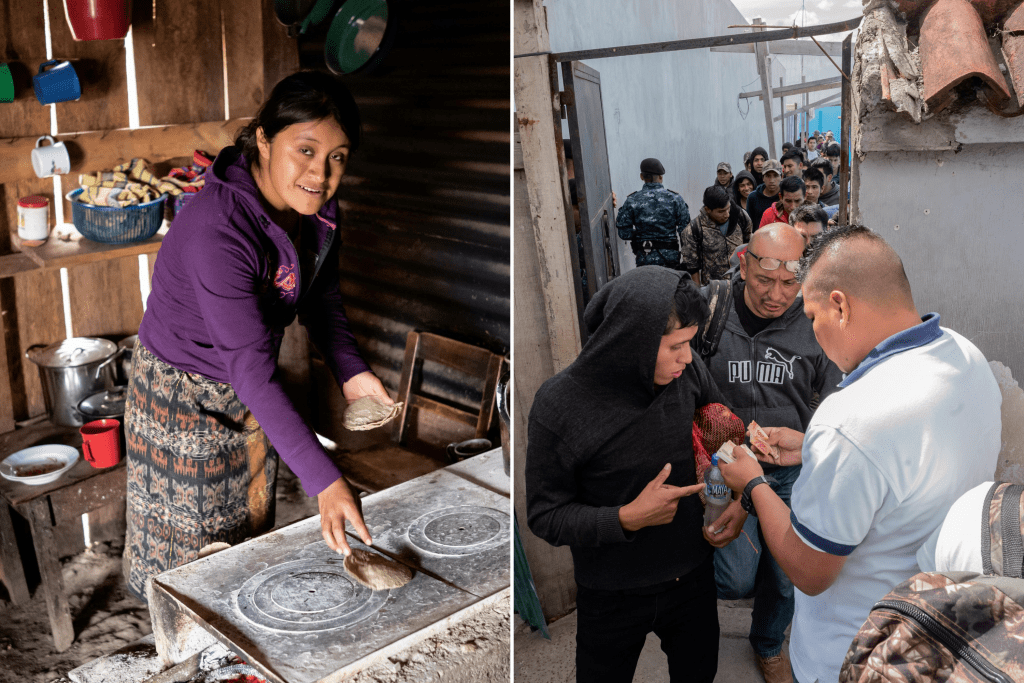
The Guatemala Air Force base where the planeloads of returnees arrive looks like it could post the creed from the Statue of Liberty that the current United States administration has seemingly rejected: “Give me your tired, your poor, your huddled masses.” If you stand on your tiptoes and peer over the metal wall around the compound, you can see them — the returnees — walking toward the exit: heads hanging down, eyes averted, shoulders hunched, hands clutching small white mesh bags that contain a few personal items. After being checked off a government list, the men, women and children wind their way down an alley toward the street where buses will take them to shelters or waiting family members. Their busted dreams left on the runway, they find their way back to the hunger and fear that pushed them out of these ancient mountaintops in the first place.
Nineteen-year-old Isaias Garcia emerges from the gate glancing about, hoping to see a familiar face there to meet him. “I was the hope for my family,” he says. “There’s no food here, no jobs. I wanted to go to the U.S. to work and earn money and send it back here. They were depending on me.” He got as far as the other side of the American border when he was caught, detained for five days and deported.
Despite the measures to keep them out, tens of thousands of migrants from Guatemala make it to the United States each year. Many families in Guatemala’s ancient highlands have a story to tell. Maria Micaela Pedro Manuel, 22, saw her husband leave for the United States several years ago. When she didn’t hear from him for months, she decided, in 2017, to hit the road with their two daughters, Lorena, then three, and Elena, then one. She paid a coyote over 16,000 quetzals (C$2,800) and set out. It was a harrowing journey — hiding in a locked truck for two days in Mexico, detained by immigration authorities for a month in Texas, sleeping with the two girls in a tiny space and eating nothing but burritos — but at last the officers let her go and told her to come back in six months for a court hearing. She and her girls took a bus to Alabama where her aunt lives. “I knew that now my life was going to be good,” says Pedro Manuel.
But six months later, when she dutifully went back to the court, she recalls the judge saying, “You will be deported. You cannot leave this detention centre.” She begged to see her girls but was denied, and a month later was shackled onto a seat in a plane going back to Guatemala City. “I was desperate to be with my girls,” says Pedro Manuel, “so about a year later, on March 4, 2019, when I had enough money to pay the coyote, I tried again.” This time, her journey included clinging to the side of one of the freight trains known as La Bestia — “some people fell off and died” — and forging the Rio Bravo del Norte in hip-deep water. “Thankfully the water was low, because I can’t swim.” It was once she crossed the desert into the United States near San Antonio, Texas, that the migration authorities nabbed her and took her into detention. Then she went through what could only be described as an astonishing route home: first to Washington state, then to Colorado, then to Tacoma, Wash., where she was kept for 10 months, then to Phoenix — all the while begging to see her daughters. She recalls a court official saying, “If you are approved, you will see your daughters; if you are not, you won’t.” She was then sent back to Guatemala City, arriving after another round of delays on Dec. 7, 2019.
“I’ll try again as soon as I can raise the money for the coyote,” says Pedro Manuel. “I want to live in the U.S. I have nothing here.” She’s shy, picking at her fingers while she tells her awful tale. But she’s feisty, too. “Even if this is the saddest thing in the world for me to be without my daughters, they are better off in the U.S. There is no future for them here. No food, no house, no land.”
Last year, with a budget of over $11 million, the Action Against Hunger team in Guatemala worked with more than 35,000 people to help them remain living in their communities. It provided food assistance to over 18,100 people, including more than 4,900 children under five who were at risk of malnutrition.
“Even if this is the saddest thing in the world for me to be without my daughters, they are better off in the U.S.”
Maria Micaela Pedro Manuel
With support from the Canadian government, AAH is also building resilience in families, like the ones in Huehuetenango, who are most vulnerable to recurring food crises. This includes training in new agricultural practices that help farmers adapt to changing weather patterns; vocational training for alternative income sources; and delivery of tools and seeds. The group has also created women-led seed banks and community gardens to promote diversified diets and help these families survive climate shocks and crop failures. Since lack of access to clean water is one of the main drivers of chronic malnutrition, AAH started work on a water and sanitation project that will benefit more than 195,000 people in 120 communities.
And in May, with the support of the Canadian embassy in Guatemala, AAH started working with staff and volunteers at the deportee reception centre to deliver hygiene kits and information on COVID-19 to the newly returned.
But stop-gap measures aren’t enough. Miguel Angel Garcia Arias, the AAH country director, says the United States needs to help the development of Central America by paying fair prices for the goods that come from the region. Success in Central America “means decent policies that improve the lives of the people through a reformed tax system and better use of resources. It means being allowed to export your products to the north to open your market. It means establishing ways to help the people who are fleeing the persecution, the guns and the hunger.”
And if that happens, it means that kids like Andrea can stay home rather than take a chance on fleeing. Although food aid is arriving and a sturdy little garden plot is boasting new produce, the family isn’t convinced their future is safe. Five weeks after Andrea’s return, she piggybacks her little brother over the field and plays chase with the other kids. She seems like a happy-go-lucky kid who has come to terms with her extraordinary adventure. But then she approaches me, a stranger, and says, “If you’ll take me, I’ll go with you.”
This feature first appeared in Broadview’s September 2020 issue with the title “Dead end.”
Sally Armstrong is a writer in Toronto. Her and Peter Bregg’s trip to Guatemala was partly funded by Action Against Hunger. The organization did not review this feature.
I hope you found this article from Broadview engaging. The magazine and its forerunners have been publishing continuously since 1829. We face a crisis today like no other in our 191-year history and we need your help. Would you consider a one-time gift to see us through this emergency?
We’re working hard to keep producing the print and digital versions of Broadview. We’ve adjusted our editorial plans to focus on coverage of the social, ethical and spiritual elements of the pandemic. But we can only deliver Broadview’s award-winning journalism if we can pay our bills. A single tax-receiptable gift right now is literally a lifeline.
Things will get better — we’ve overcome adversity before. But until then, we really need your help. No matter how large or small, I’m extremely grateful for your support.
Jocelyn Bell
Editor/Publisher

